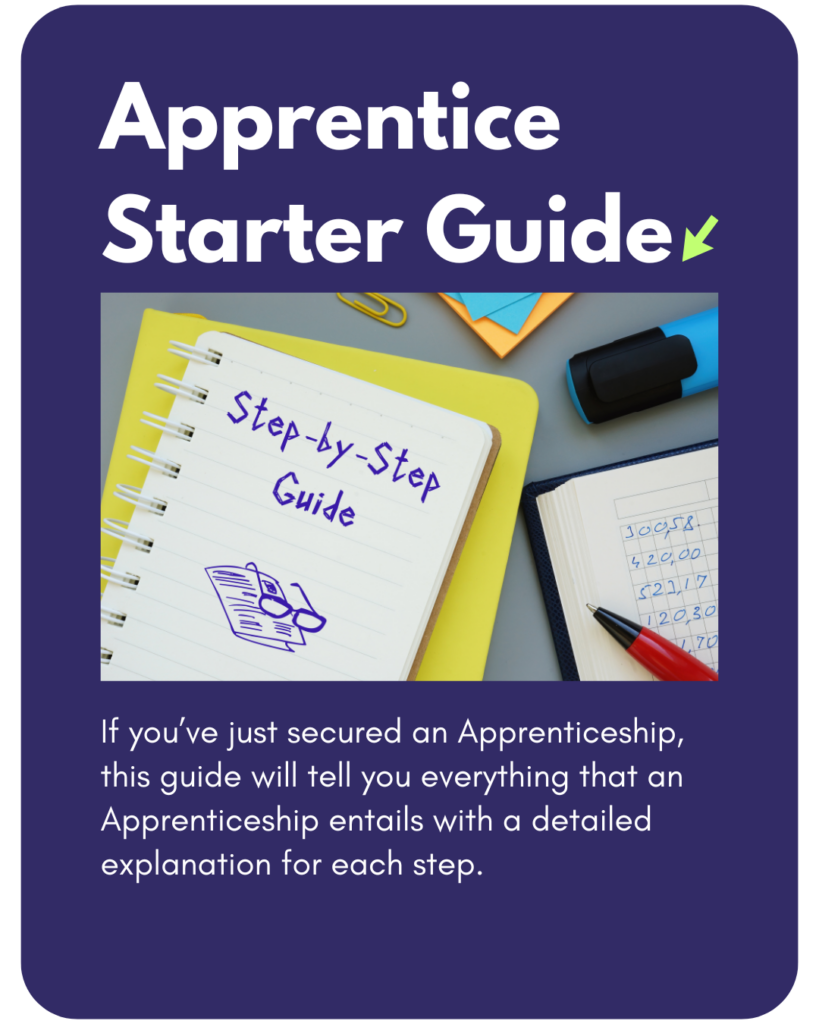Take the first steps on your Apprenticeships journey!
The First 360 Career Hub is designed to guide you every step of the way. Here, you’ll find everything you need to succeed, from expert advice and practical tools to real-life success stories that inspire. For apprentices, we offer personalized support to help you discover, apply for, and thrive in an apprenticeship program tailored to your goals. For employers, we provide insights and resources to maximize the impact of apprenticeships on your business.
Learn How it Works
Step 1: Discover Opportunities
View our latest vacancies via Indeed or the Live Jobs page
Step 2: Apply and Prepare
Once you’ve found the apprenticeship that matches your skills and goals, it’s time to focus on making a strong application. This step is crucial to showcasing your potential to employers.
What You’ll Need to Do:
- Update Your CV:
- Highlight relevant experiences, even if they’re not formal work roles (e.g., school projects, volunteering, or personal achievements).
- Focus on transferable skills like teamwork, communication, and problem-solving.
- Use action verbs to describe your achievements (e.g., “led,” “organized,” “improved”).
- Provide examples of any technical skills relevant to the apprenticeship, such as coding, design, or customer service.
- Prepare Your E-Portfolio (If Applicable):
- An e-portfolio is a digital collection of your work, showcasing skills and achievements in a practical way.
- Include examples such as:
- Photos of completed projects.
- Links to creative work (e.g., design, writing, or code).
- Certificates from courses or training.
- Use platforms like LinkedIn, personal websites, or shared folders to present your portfolio professionally.
- Tailor Your Application:
- Write a custom cover letter for each application.
- Emphasize how the role aligns with your goals and what value you bring to the company.
Resources:
Step 3: Start Your Apprenticeship Journey
Congratulations! Once you’ve secured your apprenticeship, you’re ready to dive into an exciting new chapter. Here’s what happens next:
Secure Your Apprenticeship:
- Receive Your Offer Letter:
- Review the terms of your apprenticeship, including pay, working hours, and training structure.
- Clarify any questions with your employer or apprenticeship coordinator.
- Sign the Contract:
- Ensure you understand your responsibilities and rights as an apprentice.
- Familiarize yourself with any probationary period or initial performance expectations.
Begin the Onboarding Process:
- Attend Orientation:
- Get to know the company, your team, and the work environment.
- Learn about the tools, systems, or software you’ll use in your role.
- Meet Your Mentor:
- Many apprenticeships pair you with a mentor to guide your learning journey.
- Schedule regular check-ins to discuss progress, challenges, and goals.
- Plan Your Training Schedule:
- Work with your employer to outline key milestones for both on-the-job training and classroom learning.
- Set clear, achievable objectives for the first 3–6 months.
Tips for a Strong Start:
- Be proactive: Take initiative and show enthusiasm for learning.
- Stay organized: Use tools like calendars or task apps to manage your workload.
- Seek feedback: Regularly ask for constructive input from supervisors and mentors.
Resources:

For Apprentices
Articles
For Employers
Guides
of employers say that apprenticeships provide higher overall productivity
of apprentices employed were satisfied with their apprenticeship overall
of apprentices said their ability to do the job had improved making apprenticeships a great way to Upskill
of apprentices stay in their employment long term after finishing their apprenticeship qualification
Ready to Begin?
Get in Touch!






